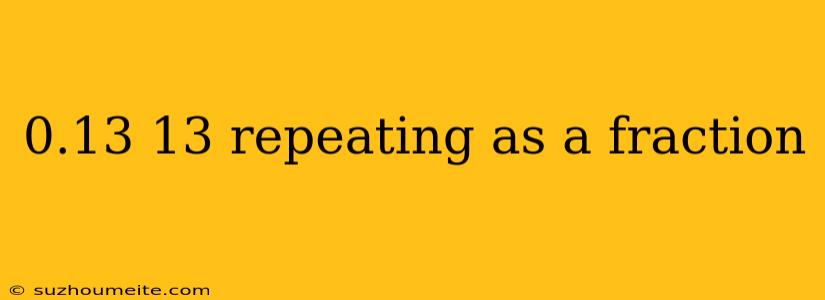0.13 Repeating as a Fraction
In mathematics, a repeating decimal is a decimal that has a sequence of digits that repeats indefinitely. One such example is 0.13 repeating, which can be written as 0.1313... where the sequence "13" repeats forever. But how can we express this repeating decimal as a fraction?
The Rule of Converting Repeating Decimals to Fractions
There is a simple rule to convert a repeating decimal to a fraction. Let's say we have a repeating decimal of the form 0.abcd..., where "abcd" is the repeating sequence. To convert it to a fraction, we can follow these steps:
- Let the repeating decimal be equal to x, i.e., x = 0.abcd...
- Multiply both sides of the equation by 10^n, where n is the number of digits in the repeating sequence. In this case, n = 2.
- Subtract the original equation from the new equation.
Applying the Rule to 0.13 Repeating
Let's apply the rule to convert 0.13 repeating to a fraction.
- Let x = 0.1313...
- Multiply both sides by 100 (since the repeating sequence has 2 digits): 100x = 13.1313...
- Subtract the original equation from the new equation: 100x - x = 13.1313... - 0.1313... => 99x = 13
Simplifying the Fraction
Now, we can simplify the fraction by dividing both sides of the equation by 99:
x = 13/99
Therefore, 0.13 repeating can be expressed as a fraction in its simplest form as:
13/99
So, there you have it! We have successfully converted the repeating decimal 0.13 to a fraction using the rule of converting repeating decimals to fractions.
